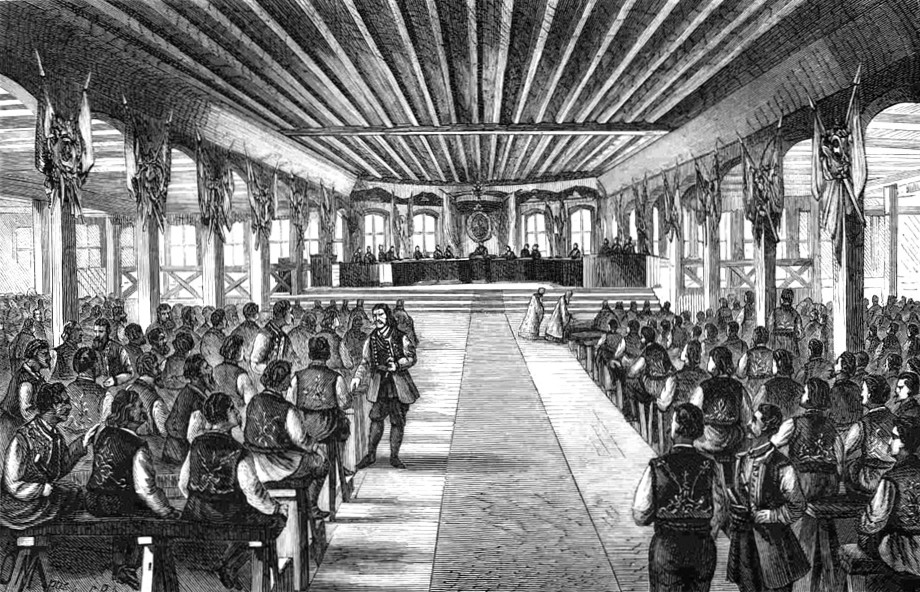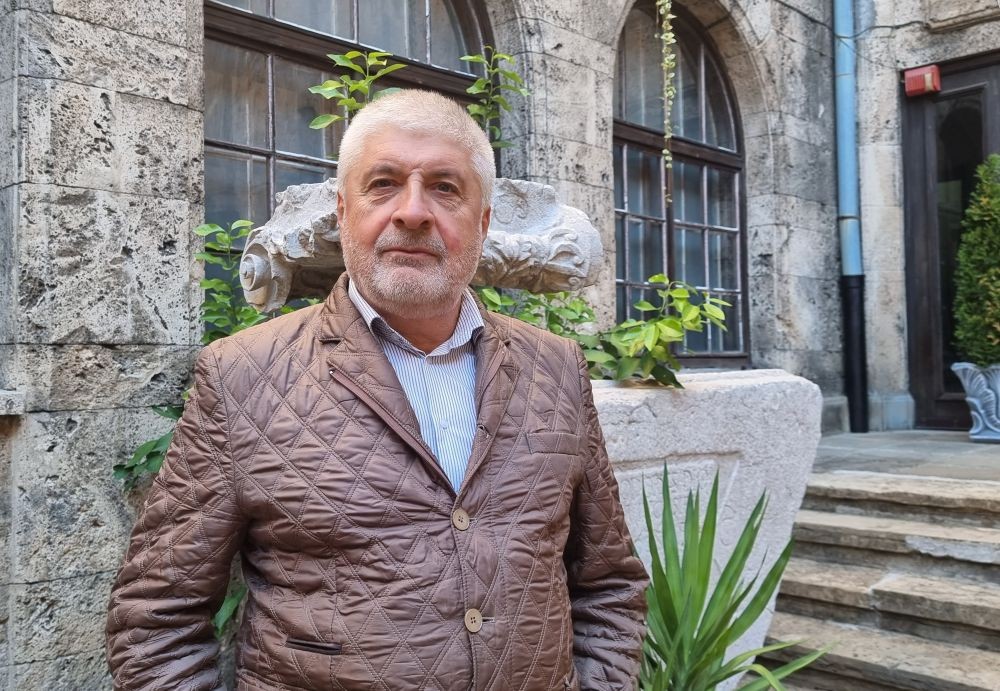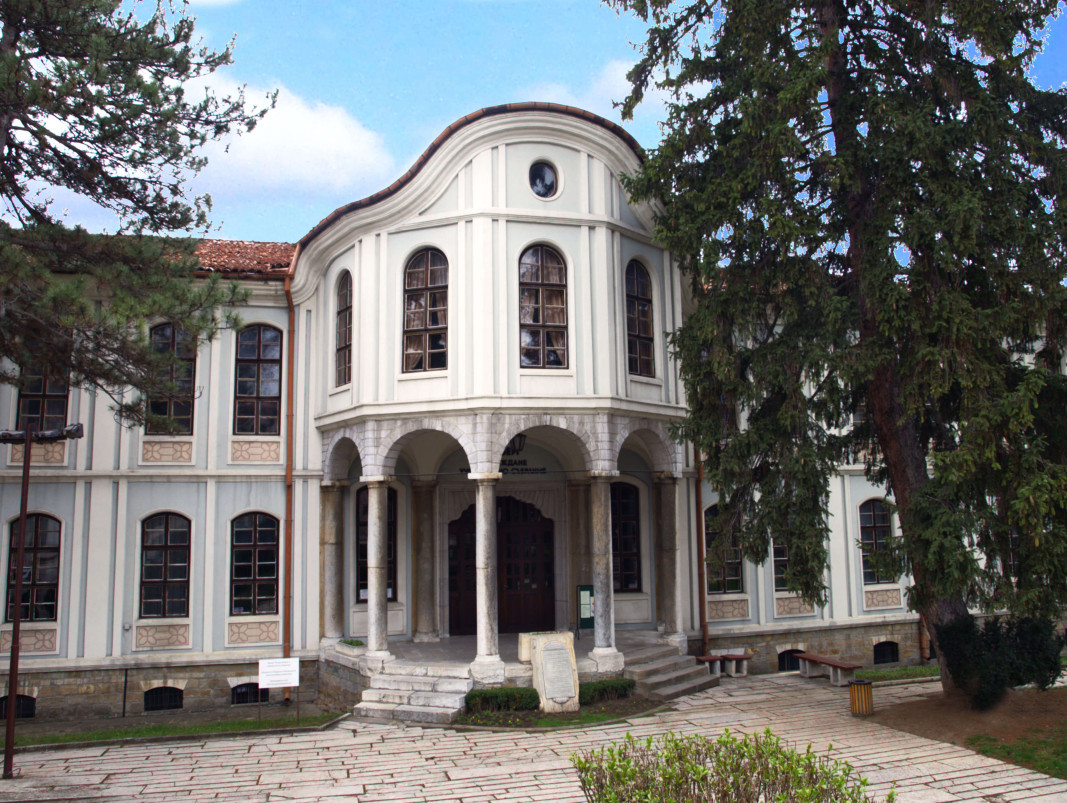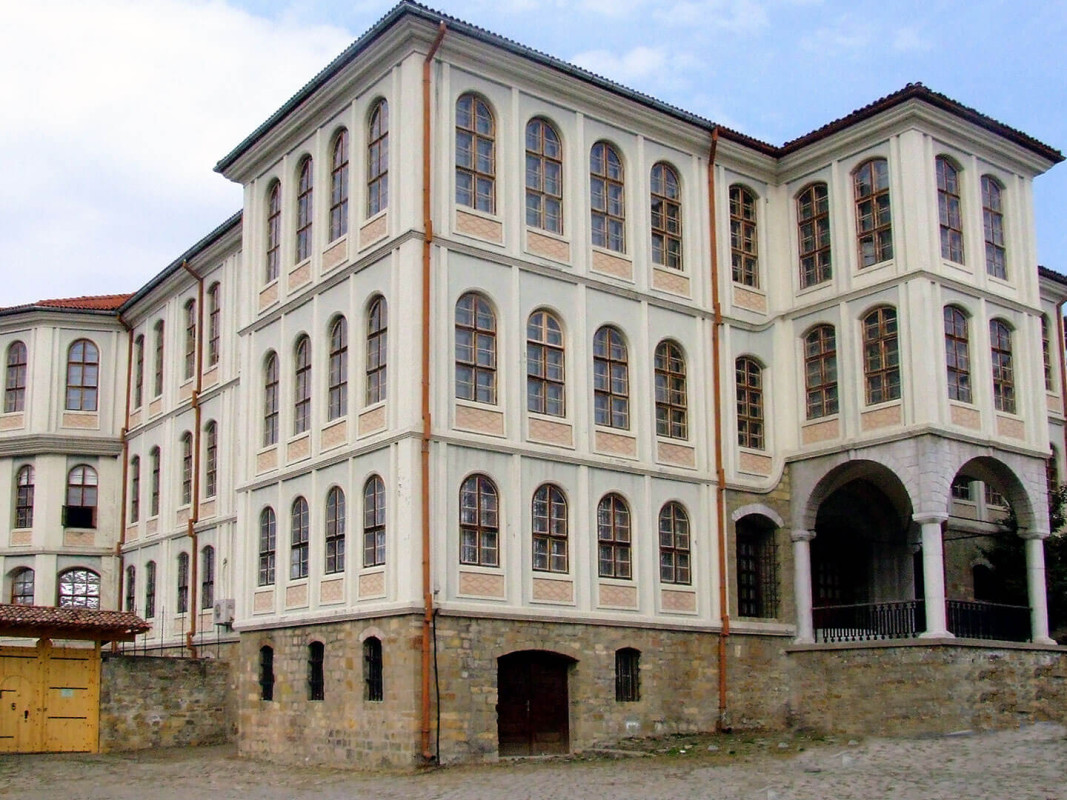On 16 April 1879, the deputies of the Constituent Assembly debated, approved and signed Bulgaria’s first constitution, the Tarnovo Constitution. This document established the legal basis for the establishment of the new Bulgarian state following the Liberation of 1878.
The Assembly brought together 230 representatives from the territories that would become the Principality of Bulgaria, as well as Prince Dondukov-Korsakov’s special envoy, Sergey Lukyanov, who had authored the draft constitution. However, delegates representing Bulgarians living under Ottoman rule in Thrace and Macedonia were not permitted to participate. The Constituent Assembly comprised 117 Bulgarian deputies, including senior clergy, heads of district courts and other institutional leaders. In addition, 89 deputies were elected by the population and 24 were appointed directly by Prince Dondukov-Korsakov to represent various communities across Bulgaria.
Today, the Museum of the Renaissance and the Constituent Assembly in Veliko Tarnovo preserves the memory of this historic assembly. It offers visitors a glimpse into the dedication and sense of responsibility that characterised Bulgaria’s first MPs — a commitment that helped lay the foundations of the modern Bulgarian state.

Despite centuries of Ottoman rule, the Bulgarian people managed to elect worthy and capable representatives, demonstrating their foresight in an unfamiliar area — parliamentary work.
Among the deputies were the 'first builders of modern Bulgaria', as historian Simeon Radev so aptly named them in his renowned book.
Representatives of the states that signed the Treaty of Berlin — Germany, France, England, Italy, Austria-Hungary, Russia and Turkey — also observed the sessions in Tarnovo, as did journalists from European newspapers.

'Since Tarnovo had the largest hall in Bulgaria at the time and people still remembered that it had been the centre and capital of the country before Ottoman rule, the Constituent National Assembly convened here,' explains Dr Ivan Tsurov, historian and director of the Regional Historical Museum in Bulgaria's old capital, which includes the Museum of the Bulgarian National Revival and the Constituent Assembly.

'Another fascinating aspect of this period is that the deputies never missed a session. The meetings began with Metropolitan Antim I as chair, but from the very first days, passions flared and shouting made the Assembly difficult to control. The chair sent a municipal messenger to find a bell. He went to a Turkish school and brought back a bell, which remains a prized exhibit in the museum today — firstly because it served its function in the First National Assembly and secondly because it is a finely crafted brass object inlaid with gemstones dating back to 1472 in Persia.”

Interestingly, the proceedings were stenographed every day. By evening, they had been typed up, and by morning, they had been printed in a press organised by Lyuben Karavelov and an associate in the basement of the building. By morning, the deputies already had the printed transcripts from the previous day's session.'

'A small square lies nearby which served as the centre of Tarnovo for around 400 years. As was customary in towns of the Ottoman Empire, some of the key buildings typical of urban planning at the time were arranged around this central area. Naturally, there was the konak — the most important building, where all administrative life took place. Next to the konak was, quite logically, the prison. Beside it stood the former Ottoman storehouse, which is still preserved today as the old archives building, although the archives now also have a new building. The site of today's modern State Archives building once housed the local court.

It was between 1872 and 1874 when Kolyo Ficheto designed and constructed the building where the Tarnovo Constitution was drafted and adopted, recalls Dr Ivan Tsurov, Director of the Regional Museum of History in Veliko Tarnovo, which includes the Museum of the Bulgarian National Revival and the Constituent Assembly.
Photos: BTA, museumvt.com, Facebook /Regional History Museum - Veliko Tarnovo, The Press Centre of the National Assembly
On the feast of the Dormition of Saint Ivan Rilski, the Bulgarian Patriarch and Metropolitan of Sofia Daniil led the Divine Liturgy at the Rila Monastery. On the eve of the feast, he bowed before the relics of the patron saint of the Bulgarian people..
Today, August 18, the Bulgarian Orthodox Church marks the Dormition of St. John of Rila – the heavenly patron of Bulgaria. He is the most beloved saint in Bulgaria and is revered even beyond the borders of this country. We associate..
The history of the largest Bulgarian church in Bulgaria from the National Revival period "The Assumption of the Virgin Mary" in the town of Pazardzhik is long and interesting. It is assumed that the first church there was built in the 17th century. It..

+359 2 9336 661
